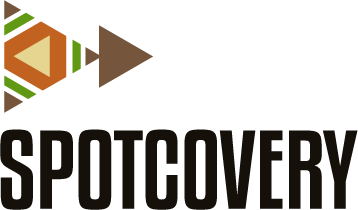As published by Ntombi Nkosi in the African Times
Rand Water and the Department of Water and Sanitation (DWS) have moved to reassure the public following a social media storm and speculative media reports claiming that antiretroviral drugs (ARVs) have been found in South Africa’s tap water. The institutions have dismissed the allegations, stressing that the country’s drinking water remains safe and complies with stringent national standards.
Become an insider. Subscribe to our newsletter for more top trending stories like this!
The controversy, which erupted earlier this week, was triggered by community activists and commentators on local radio stations in Gauteng and Mpumalanga, who raised alarm over reports that traces of ARVs had been found in tap water. The claims quickly gained traction on social media, fuelling public concern and prompting calls by some political parties for a parliamentary inquiry.
Also Read: South African Businesses Brace for Tariff Blow as Trump Targets Trade Deal
Rand Water: No ARVs in Water Supplied to Public
In a statement issued on Thursday, Rand Water, the bulk water supplier for Gauteng and parts of Mpumalanga, Free State and North West, categorically denied the presence of ARVs in its treated water.
Spokesperson Makenosi Maroo said that while trace amounts of pharmaceuticals, including ARVs, have been found in natural water bodies downstream of wastewater treatment plants, these were not present in the water supplied to households
“Rand Water has been monitoring ARVs in source waters since 2015, in collaboration with research institutions,” said Maroo. “We only detected traces in surface water downstream of wastewater treatment plants. Importantly, our abstraction point at the Vaal Dam is upstream of these plants. As a result, ARVs have never been detected in our raw water or final treated water.”
Maroo further emphasised that Rand Water strictly adheres to the South African National Standard SANS 241 for drinking water quality, which is based on World Health Organisation (WHO) guidelines.
“We would like to assure the public that our water is safe, clean and meets all health and safety regulations. There is no public health risk,” Maroo said.

Also Read: South Africans Applying for US Visas Forced to Make Social Media Accounts Public
DWS and Water Research Commission Weigh In
The Department of Water and Sanitation echoed Rand Water’s assurances, stating that no harmful pharmaceutical residues have been found in potable water supplied by reputable bulk providers. It further highlighted its long-standing research efforts into Contaminants of Emerging Concern (CECs), including microplastics, chemicals and pharmaceuticals.
According to the Water Research Commission (WRC), an entity under the DWS, the presence of trace pharmaceuticals in rivers is a global issue, largely due to the excretion of medication residues into municipal sewage systems. These residues can enter rivers and dams if wastewater treatment plants are not equipped to filter them out.
One such study, commissioned by the WRC and conducted by North-West University, found traces of ARVs such as nevirapine, efavirenz, lopinavir and fluconazole in rivers and at some drinking water sites. However, the quantities were extremely small — measured in nanograms per litre, which is one billionth of a gram.
The study also found that almost all samples of drinking water were below the limit of quantification, meaning the amounts were so low they were almost undetectable.
“These concentrations are not considered harmful and pose no risk to human health,” said the WRC. “Pharmaceuticals like ARVs treat diseases — they do not cause them. There is no evidence that their trace presence in water could cause HIV infection or immediate health effects.”
However, the WRC warned that long-term exposure to low levels of pharmaceuticals in the environment may contribute to antimicrobial resistance, an issue currently under global scientific review.
Also Read: The Past Decade has Laid a Solid Foundation for Realising the Agenda 2063
Understanding the Pathway
According to experts, ARVs and other pharmaceuticals enter water systems primarily through human waste. After ingestion, a portion of the drug is excreted unchanged and ends up in wastewater. Municipal wastewater treatment plants, which are primarily designed to remove solids and bacteria, may not completely filter out these micro-contaminants.
Prof. Linda Mokoena, a water chemist at the University of Pretoria, explained: “The appearance of pharmaceuticals in rivers is a well-known and studied phenomenon globally. However, this is distinct from drinking water, which undergoes further treatment before it reaches households.”
Become an insider. Subscribe to our newsletter for more top trending stories like this!
She added: “The idea that people are unknowingly consuming ARVs through tap water is not supported by science. These fears, while understandable, are being misdirected.”
Also Read: South Africa Begins Withdrawing Troops from DR Congo Amid Delays and Logistic Hurdles
Media Responsibility and Public Education
Rand Water and DWS both urged media outlets, academics and the public to seek verified information and avoid fuelling panic. Maroo said the utility was always available to provide factual updates and assist the media in educating the public accurately.
“We call on the media to uphold its responsibility of informing the public with facts — not fear,” she said. “We remain committed to protecting the health of consumers and will continue to participate in research, invest in innovation, and maintain water quality monitoring across our supply chain.”
Political and Civil Society Reactions
The Democratic Alliance (DA) called on Water and Sanitation Minister Pemmy Majodina to appear before Parliament to address public concerns, even while acknowledging that the fears may have been exaggerated.
“This incident, while based on misinformation, highlights the urgent need for proactive public communication and transparency,” said DA MP Leon Basson.
The African National Congress (ANC), meanwhile, issued a statement thanking Rand Water for its swift response and called for calm among the public. Civil society organisation SECTION27 welcomed the transparency but urged continuous monitoring, particularly in underserved communities where water systems may be under strain.

Global Context of CECs in Water
Across the world, CECs such as pharmaceuticals, microplastics and personal care products are an emerging concern. Most countries do not yet regulate these trace contaminants in drinking water due to their extremely low concentrations and limited understanding of long-term impacts.
The WRC’s ongoing research aims to:
- Identify and quantify contaminants
- Understand how they enter water ecosystems
- Evaluate health and environmental risks
- Develop innovative treatment solutions
South Africa’s Blue and Green Drop programmes, led by DWS, are used to monitor municipal water and wastewater performance, ensuring compliance with SANS 241 and providing transparency to the public.
Conclusion: No Cause for Alarm
While the presence of trace ARVs and other pharmaceuticals in natural water sources is a real and globally acknowledged issue, both Rand Water and DWS maintain that South Africa’s drinking water remains safe, compliant and free from health risks.
“There is no reason for panic,” concluded Maroo. “Water is life — and our mission is to keep it safe for all South Africans.”
Citizens are encouraged to report any water quality concerns directly to Rand Water or their local municipalities and to rely on official sources for accurate information.
This article has been published in partnership with the African Times.
Become an insider. Subscribe to our newsletter for more top trending stories like this!




